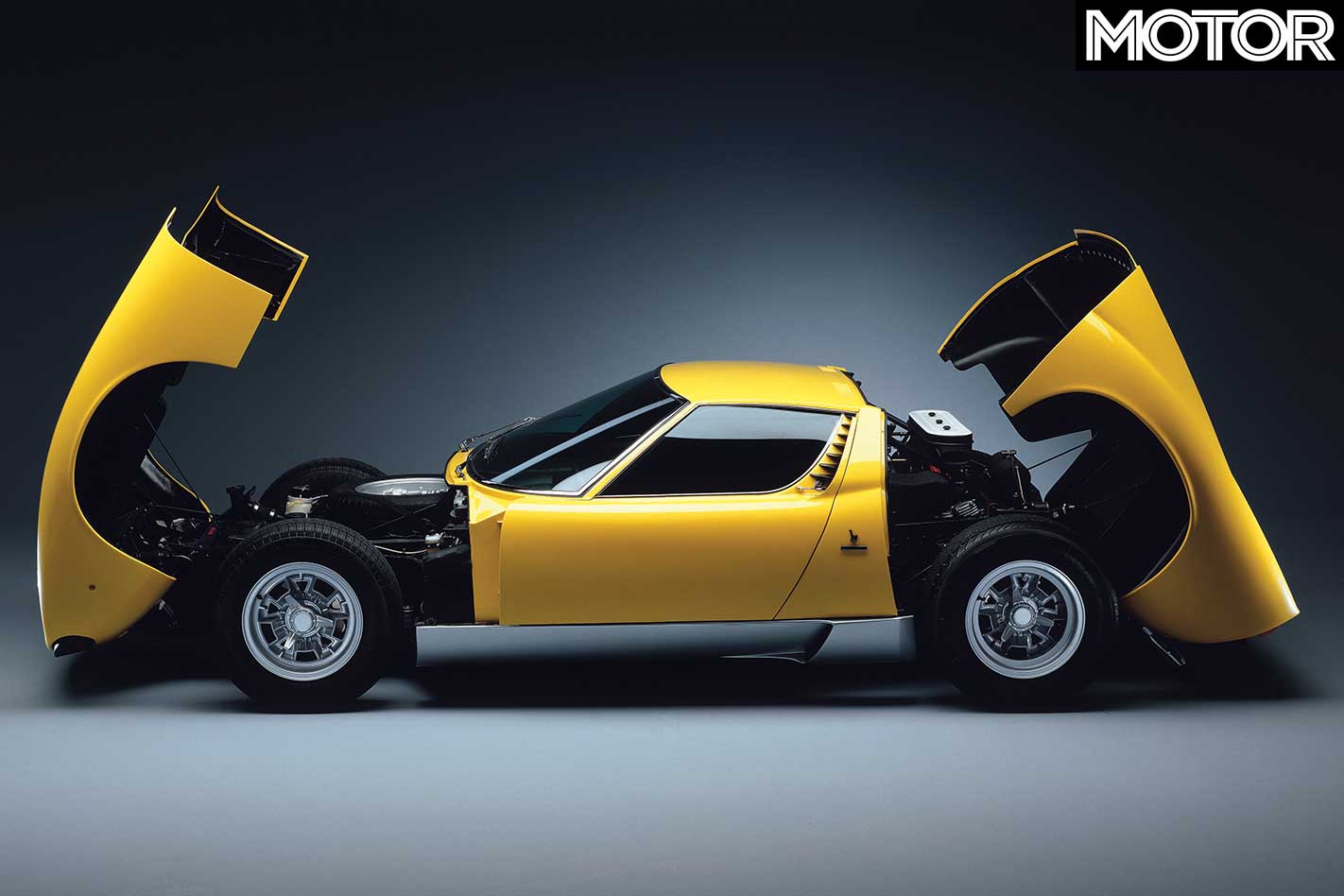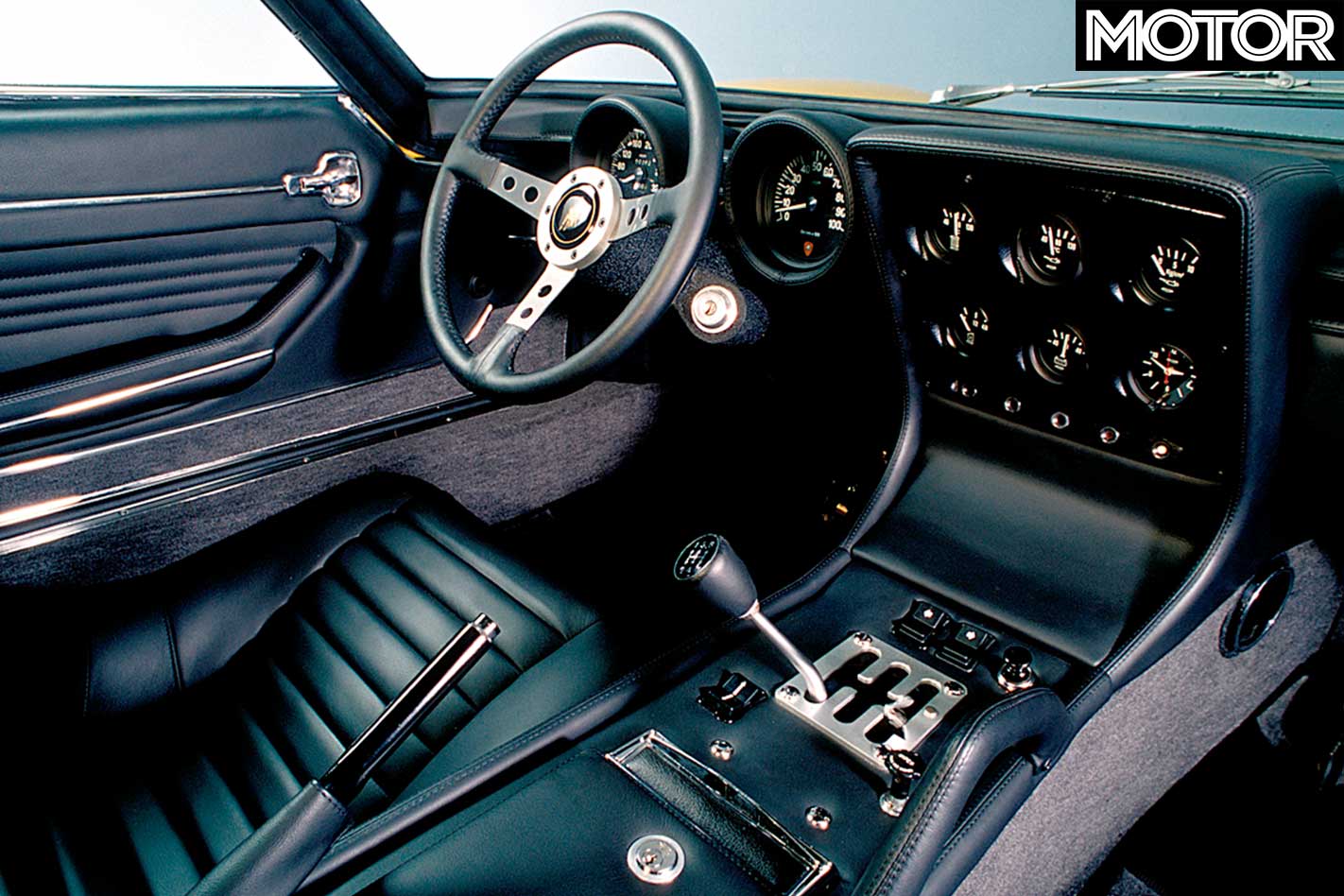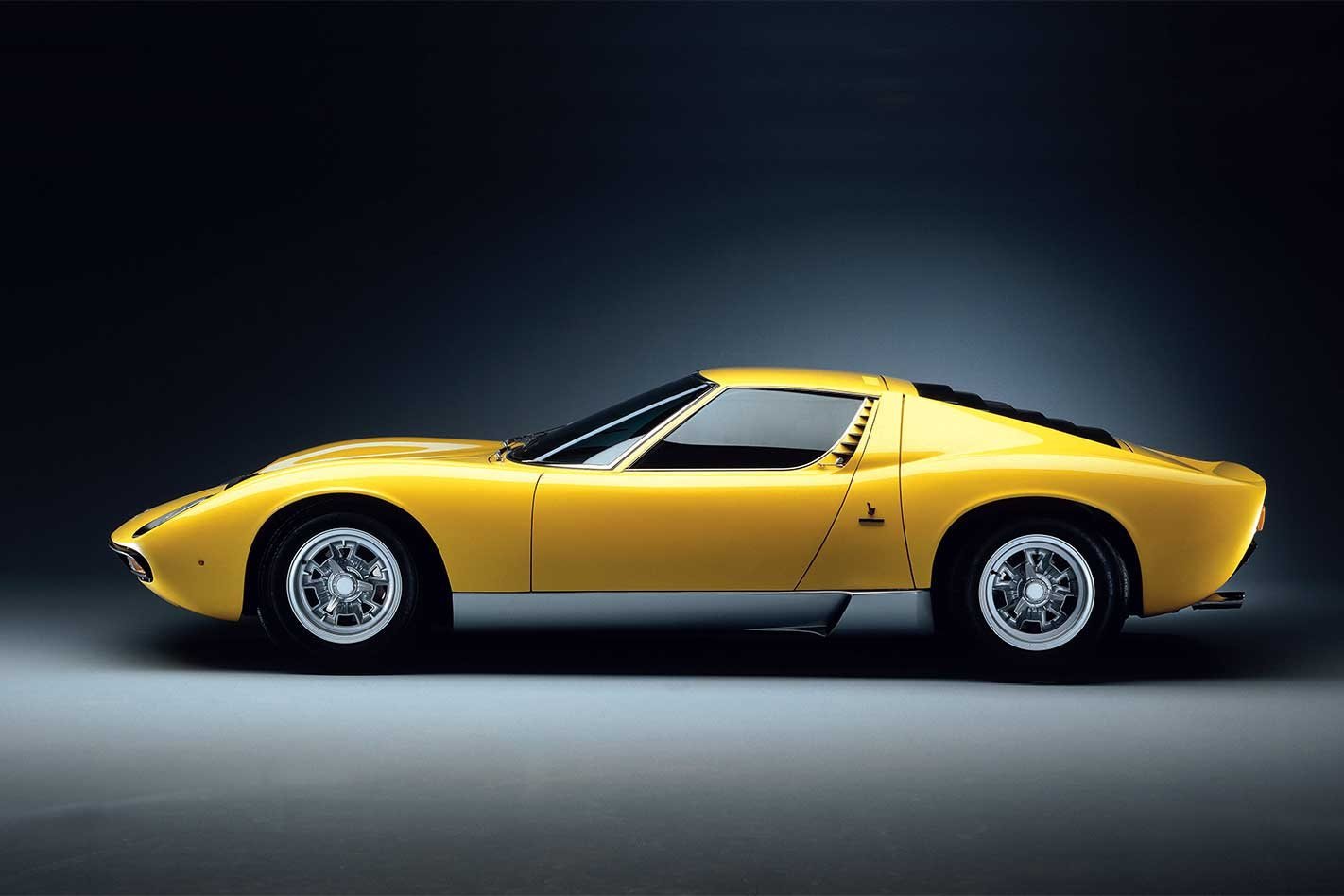I reckon there’s something special about a car that can take a motor show by storm. I mean, there you are, surrounded by bright lights, hostesses made up almost entirely of breasts and lipstick, dodgy-looking spivs in suits, and acre upon acre of brand-spanking metal, all polished to within an inch.
This feature was originally published in MOTOR’s December 2008 issue
It’s possible to walk away from such events wondering what the hell the fuss was all about, especially if nothing with four wheels has rushed over, grabbed you by the collar and shoved its tongue down your throat.

In my lifetime, the latter-day Monaro prototype of 1998 absolutely stole the Sydney Motor Show. But before that, you had the Citroën DS slaying them at Paris in 1955, the E-Type Jaguar braining the crowds at Geneva in 1961 and, this car, the Lamborghini Miura, which stormed the Geneva show in 1966 (then again, the Miura’s chassis was shown at the Turin show in 1965 and despite not having any sort of body fitted, Lamborghini still managed to take orders for it).
Anyway, if there’s one thing all those cars have in common, it’s a degree of gorgeousness you just don’t see every day (okay, the Citroën isn’t to everybody’s taste, but those who get it, get it bad).
The legend of the Miura isn’t just down to its stunning bodywork. For starters, there’s debate as to who actually penned what many view as still the most beautiful car in the world. We know that the mid-engined layout out of the Miura is down to Gian Paolo Dallara (remember the Dallara Formula 1 chassis? Yep, same dude) and Paolo Stanzani, while Marcello Gandini is credited with sketching up the clothes.

But Giorgetto Giugiaro, who worked for Bertone until November 1965, claims that it was he who penned the Miura’s proportions while at the design house, and that Gandini simply added the production details to the Miura’s form. And believe it or not, the three official contributors were all only in their 20s when they dreamed up the stunning Miura.
If you look hard, you can see just a bit (okay, maybe quite a bit) of Ford GT40 in the Miura’s profile, and that’s no surprise as the Ford was sticking it to everybody with its race-car in those days. But there’s also a purity to the Lamborghini which, from any angle, makes it look graceful and aggressive at the same time.
Not easy, but that’s the Italians for you. Gandini’s detail stuff is gorgeous, too; the louvered rear windscreen and the eye-lashes on the headlights (that sadly disappeared in the final version).
But beneath all that beauty, the Miura was also a serious piece of hardware. The engine is – as the mill in all good Italian supercars should be – a V12. It measures 3.9 litres (3929cc to be exact) and runs four triple-choke down-draught Webers.

That sounds great, but the carbs were actually racing units and weren’t the best idea for a road car. After idling for any length of time, for instance, the carbs would fill the chamber above the throttles with raw fuel which was then depressingly likely to ignite as the light turned green and the car accelerated away. This happened often enough for the early Miuras to be regarded as serious barbecue risks.
The solution was to add a fuel return system to the Webers, a solution that Ferrari also ended up using, which is somewhat ironic because tractor-maker Lamborghini only ever got into road cars after the boss – Senor Lamborghini – bought a Ferrari road car, found it unreliable (gasp) and was then more or less snubbed by Enzo when he dared to complain. The 350 GTV concept of 1963 was Lamborghini’s first attempt before the Miura shocked both admirers and (now former) detractors of Italy’s other exotic car maker.
With truly unusual double overhead camshafts (this was 1966, remember, when a heater was still an extra-cost option in your HR Holden), the Miura’s engine burped up 261kW at 7000rpm, with the 1971 S version delivering 276kW. The SV version that’s pictured here pumped out a substantial 287kW. Unheard of, really.

While the Miura’s mid-engined construction might seem a bit passe these days, back then, mounting the engine in the middle was equally all but unknown. Ferrari did, however, debut the Dino at Paris in 1965, a mid-engined V6, prior to the Miura’s naked debut at Turin the following year.
The Italians can’t take all the credit for the mid-engine mayhem though: Ferdinand Porsche started the mojo with race-cars as far back as the 1920s. Still, to find a road car with a mid-engined layout, you needed to look again at Porsche and the Spyder of 1954, as well as the ’60s De Tomaso Vallelunga and the el-weirdo Zundapp Janus of 1957, which was as relevant as a chocolate teapot.
Unlike modern interpretations of the mid-engined theme, the Miura mounted its engine not longitudinally, but sideways (leaving enough room for a tiny luggage compartment in the tail, behind the engine). It also courted idiosyncrasy by using the same technology as the original Mini and putting the gearbox in the sump, rather than a separate, erm, ’box with its own oil (and God alone knows what those straight-cut gears did to the lifespan of the oil they shared with the engine).

Driving any Italian supercar from this era soon reveals a pleasure-and-pain thing going on. While the V12 is lovely and surprisingly docile around the ’burbs, the gearbox is clunky and, in the manner of early gated shifts, a complete bitch to use, especially when the oil is cold.
There’s a foreboding 10,000rpm tacho (8000rpm was the redline) and a 320km/h speedo egging you on to squeeze those floor-hinged pedals (which you actually do get used to – ask a Porsche 911 owner), and ergonomics that throw into doubt the notion that Rome could ever possibly have ruled the world.
To describe the noise as lovely is a gross understatement (if you ignore the wailing gearbox, that is). The Miura sings one of the automotive world’s sweetest symphonies.
Goof about at 2000rpm and you’ll probably hate the Miura as much as it’ll hate you, but the steering starts to make sense the faster you go. Drive it like a ’60s Italian movie star on his way to pick up Sophia Loren for dinner before a slap and tickle session, and the Miura works.
Lamborghini Miura SV – The Good

01 – Looks good The Miura is a stunner, and still regarded by many as one of the most beautiful cars ever created, period
02 – Feels good The second Lambo made isn’t too bad a thing to drive, either, in a mid-60s Italian kind of way
03 – A good investment Keep your Miura in tip-top condition (and you will, at current prices) and its value should keep going up
Lamborghini Miura SV – The Bad

01 – Park and pray Think about it for just a moment – where on earth could you possibly park it? Yep, absolutely nowhere
02 – Needs costly TLC The Miura will require a fair bit of expensive fettling, even if it’s just sitting around most of the time
03 – Parts famine Spare parts could be a bit of an issue. And replacement body panels? Seriously, don’t make us laugh





